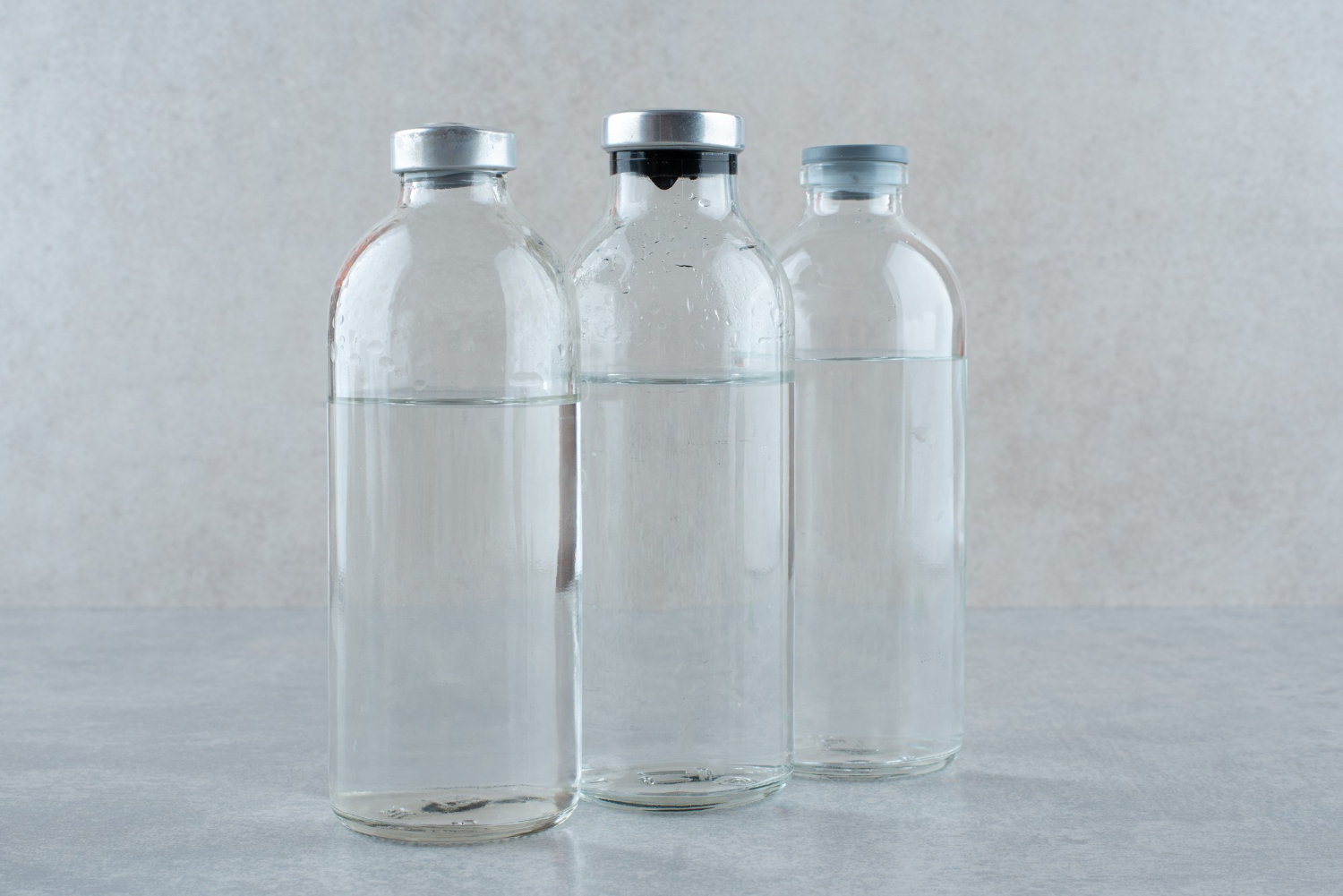
You've seen it before. The letters ETOH, followed by a whole lot of words, maybe even a few numbers. You might have wondered what it meant—and you're not alone.
It's actually pretty easy to understand: it stands for Ethyl Alcohol, and it's the chemical compound that makes up the stuff we call "drinking alcohol." You know, beer, wine, whiskey… all that good stuff.
But what does it mean? Why do we need this abbreviation? And how come there are so many different ways to spell it? We'll answer these questions and more in this article!
What Does ETOH Nursing Abbreviation Stand for?


ETOH stands for Ethyl Alcohol. It's the chemical name for the alcohol in alcoholic drinks, such as beer, wine, and spirits.
Alcohol is a depressant drug that affects the central nervous system (CNS). It can cause impaired judgment, lack of coordination, and drowsiness. When taken in large quantities or over time, it can result in unconsciousness and even death.
Etoh is also used as a solvent or cleaning agent in industrial processes. The abbreviation is often used to refer to ethyl alcohol as an ingredient in cosmetic products such as shampoos, conditioners, and hair gels.
Molecular Formula of ETOH


Ethanol has a molecular formula of C2H5OH. This means that each ethanol molecule has two carbon atoms and five hydrogen atoms bonded together in a linear chain structure with an -OH group attached at one end.
How Do Nurses Use ETOH?


Nurses have many uses for ethyl alcohol (ETOH) in their daily practice. Ethyl alcohol is a colorless liquid that can be consumed as an alcoholic beverage but has other benefits as well:
Disinfecting wounds: Doctors often prescribe antibiotics to help treat wounds caused by infections such as staphylococcus or streptococcus bacteria that are commonly found on human skin.
However, even after antibiotic treatment, some wounds may still contain harmful bacteria because of poor circulation or lack of blood supply. To remove any remaining bacteria from the wound site, nurses will apply ETOH directly over the wound with cotton balls or swabs.
Sterilizing equipment: Nurses use ethyl alcohol (ETOH) to sterilize equipment used in patient care such as surgical instruments, medical devices such as catheters, and other tools used during surgery like scalpels.
Medical Uses of ETOH


Ethanol has many medical uses. As a topical disinfectant, it cleans wounds and prevents infection.
It can also be used as an antiseptic to sterilize surgical instruments, wound dressings, and other equipment. Ethanol is used in some mouthwashes and throat lozenges to relieve sore throats and dry mouth caused by certain medications (such as those taken after surgery).
Ethanol has been used as a solvent for non-polar compounds such as fats and waxes. It is also used as a disinfectant in products such as hand sanitizers and mouthwashes.
Non-Medical Uses of ETOH


Ethanol is used in a variety of non-medical ways. In addition to industrial use, it is used as an antiseptic and disinfectant under the trade names Isopropyl alcohol or Rubbing alcohol.
It is also used as a solvent for paints and varnishes, as a paint thinner and evaporative coolant for automotive radiators, as fuel for model engines, in cooking and food preparation, and as the active ingredient in many personal care products, including mouthwash.
In some countries such as Sweden and Finland, ethanol is considered an alternative to petrol in some cars. The use of ethanol as a fuel has become more common due to its lower carbon dioxide emissions when compared with petrol.
What Does It Mean When ETOH Is On A Medical Chart?


The most common reason for seeing ETOH on a medical chart is because the patient was admitted for alcohol intoxication. It can also be written when the patient has consumed large amounts of alcohol in a short period.
The abbreviation can be used to describe any type of drug abuse or addiction, including drugs such as heroin or methamphetamines.
Another common use of ETOH is when referring to alcohol withdrawal syndrome (AWS). AWS is when someone experiences physical symptoms after stopping or reducing their use of alcohol. Symptoms include anxiety, tremors, confusion, hallucinations, and seizures.
ETOH can also be used to refer to a blood alcohol concentration (BAC). This happens when someone drinks too much alcohol, affecting their body chemistry.
BAC is measured by taking blood samples from the person who consumed too much alcohol and testing them for the amount of ethanol (drinking alcohol) in their system.
What Does Ethyl Alcohol Look Like?


Ethyl alcohol is a clear liquid that looks much like water. It smells of alcohol. This odor comes from the presence of hydrogen atoms attached to the carbon atoms in its molecules.
It has a lower density than water and is less dense than most liquids. It will float on top of the water if poured into it from above.
Effects of ETOH on the Body


The effects of alcohol vary from individual to individual. It depends on how much you have drunk and how quickly, your age and weight, what else you have taken, and your own tolerance for alcohol.
Alcohol can affect every body part, including your brain, heart, liver, and pancreas. It changes how these organs work, which can seriously affect your health.
The following are some of the effects that alcohol can have on your body:
Short-Term Effects
Slurred speech
Poor coordination
Impaired judgment and decision making
Impaired attention, learning, and memory functions
Reduced sexual inhibitions and increased likelihood of risky sexual behaviors
Increased risk-taking behavior (e.g., driving under the influence)
Long-Term Effects
Long-term effects of alcohol abuse include:
Cirrhosis of the liver (scarring of the liver).
Heart disease
High blood pressure
Stroke
Diabetes mellitus
Bone density loss
Muscle atrophy.
Effects on the brain
What are Other Types of Alcohol?


There are many different types of alcohol. Some are more popular than others but have unique properties and uses.
The two main categories of alcohol are:
Alcohols that contain carbon-oxygen bonds (COH) in their molecules are called aliphatic alcohols. These include methanol, ethanol (grain alcohol), isopropanol (rubbing alcohol), and propanols such as 2-butanol and pentanol.
Alcohols that contain carbon-oxygen bonds and nitrogen atoms or atoms in their molecules are called aromatic alcohols. Examples include phenol (carbolic acid), cresols (found in coal tar), and xylenols (found in crude oil).
What is Alcohol Abuse?


Alcohol abuse is a severe problem in the United States. In 2019, an estimated 14.1 million Americans — or one in every 12 adults — had an alcohol use disorder (AUD), according to the National Institute on Alcohol Abuse and Alcoholism (NIAAA).
The NIAAA defines an AUD as “a chronic relapsing brain disease characterized by compulsive alcohol use, loss of control over alcohol intake, and a negative emotional state when not using.”
In other words, you can have an alcohol use disorder if you drink too much and suffer negative consequences. However, it’s important to note that not all people with AUD will develop the same symptoms.
For example, some people may experience a loss of control over their drinking habits, while others may not be able to stop at all.
Alcohol abuse isn’t only dangerous because it can damage your health and cause problems in your relationships and career.
Alcohol Abuse Treatment


Alcohol abuse treatment is an option for patients with alcohol addiction. The treatment can be done in a hospital or a rehabilitation center. The main objective is to help the patient recover from their addiction by providing them with medical care and counseling.
The treatment usually involves detoxification and counseling sessions. Detoxification helps the patient eliminate the physical symptoms caused by their addiction. This process may take a few weeks or even months, depending on how long they have been drinking and how much they drink.
Counseling sessions are designed to help patients deal with any underlying issues that may have led them to become addicted in the first place. These sessions also help them learn how to live healthy lives free from alcohol abuse or other addictive substances such as drugs and nicotine.
It’s A Wrap!
As we've seen, ETOH stands for ethyl alcohol, and it's a common term in the medical community. ETOH is used for many things, including antiseptics, disinfectants, and even as a pharmaceutical solvent. It's also used to create other types of alcohols from other sources—for instance, and grain ethanol is made from fermented grains.
But while these may be the most familiar uses of ETOH in the medical field, they are far from the only ones. Ethyl alcohol also has many other uses, including in certain types of fuel and as a solvent for cleaning products like paint thinner or varnish remover.
So remember: if you ever see ETOH on an ingredient list or product label around your house or workplace, don't panic!
It just means that there might be some ethyl alcohol present—and while it might not be great for your health if you drink it straight up (or use it as fuel), most people will never have to worry about any adverse effects from coming into contact with this common chemical compound!
FAQs
Is beer an ETOH?
No, beer is not an EtOH. Beer is made with hops, barley, and yeast. Those ingredients are fermented and distilled into EtOH, which is then mixed with water to produce beer.
Does wine have ETOH?
Yes, wine has EtOH. So do beer, hard alcohol, whiskey, and all other forms of alcohol.
What kind of drug is ethanol?
Ethanol is a type of drug called a depressant. Depressants are drugs that slow down activity in the central nervous system, which includes our brain, spinal cord, and nerves. Alcohol is one type of depressant, as are Valium and Xanax.
Are alcohol and ethanol the same?
Yes! Alcohol and ethanol are the same things. Alcohol is just a shortened version of ethanol, the chemical name for what we know as alcohol.
Is ethanol toxic to humans?
Ethanol is toxic to humans, but only in large amounts.
As a rule of thumb, ethanol can be considered toxic when consumed at more than five times the dose required to produce intoxication. Ethanol is considered non-toxic when consumed at this level.
Can I drink ethanol?
You can, but we wouldn't recommend it. Ethanol is a type of alcohol found in many different drinks and foods. It's also known as ethyl alcohol or grain alcohol—the kind that you can make at home.







